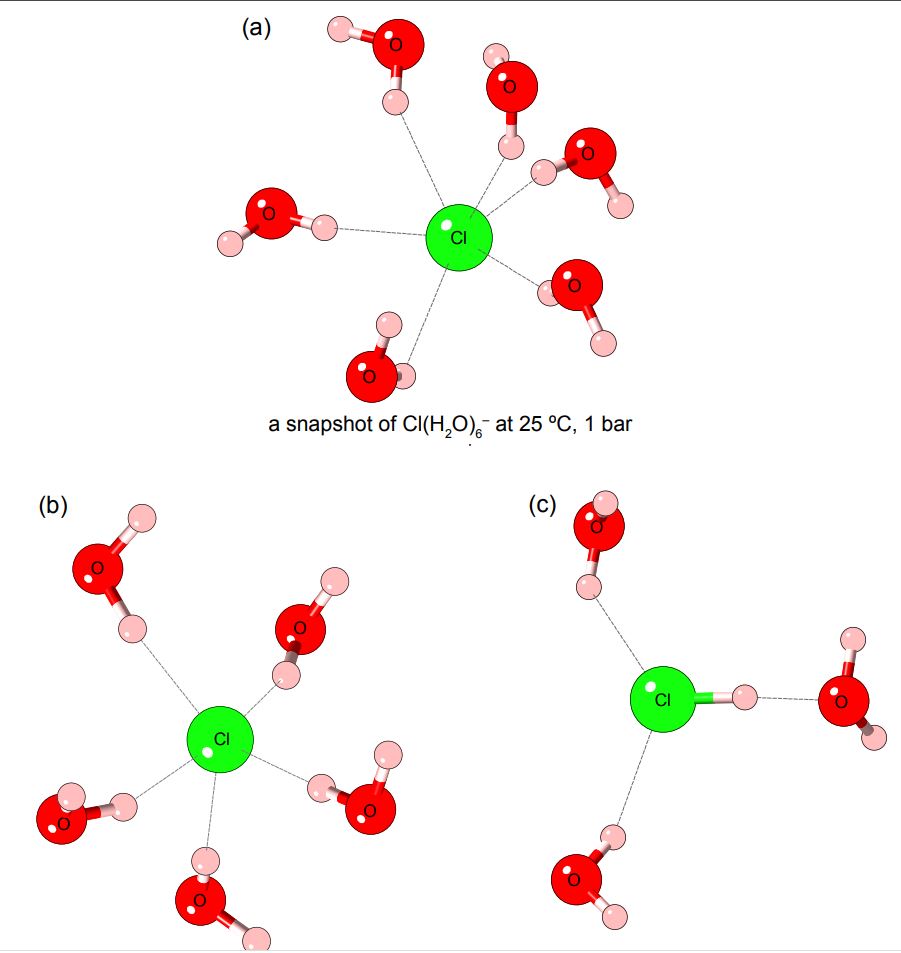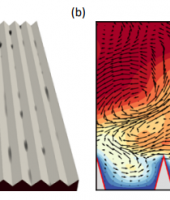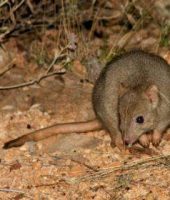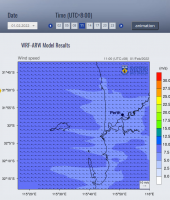Molecular dynamics simulations of gold in ore fluid
This project aims to develop a molecular level understanding of the transport and deposition of gold in complex ore fluids using molecular dynamics simulations. Current theories of the formation of gold deposits from hydrothermal fluids have been challenged by recent field and laboratory observations: Microanalysis of gold ore shows that gold nanoparticles and ‘exotic’ anhydrous volatile-rich fluids (CO2 ± SO2 and hydrocarbon) originating in the mantle may be responsible for the formation of those Au deposits. Fundamental knowledge of gold behaviour in such systems is critical for understanding the genesis of high-grade gold deposits, and will lead to a new theory of ore genesis and improved exploration strategies.
Area of science
Chemistry, Earth Sciences, Geoscience, Physics
Systems used
Magnus
Applications used
MagnusThe Challenge
Current theories of the formation of gold deposits from hydrothermal fluids have been challenged by recent field and laboratory observations. Microanalysis of gold ore shows that gold nanoparticles are likely to be important in gold transport/deposition in both supergene and hypergene environments, and the abundance of water-poor, CO2-hydrocarbon rich fluid inclusions in many gold deposits indicates that ‘exotic’ anhydrous volatile-rich fluids (CO2 ± SO2 and hydrocarbon) originating in the mantle may be responsible for the formation of those Au deposits. We will use first principles molecular dynamic (MD) to simulate gold speciation in supercritical fluids with different compositions (CO2, SO2 and organic species), and large-scale calculations of the formation of gold nanoparticles from melt systems/aqueous fluids.
The Solution
This project aims to develop a molecular-level understanding of transport and deposition of gold in complex ore fluids under a wider range of temperature, pressure and solvent conditions. We will use first principles MD to simulate gold speciation in supercritical fluids with different compositions (CO2, SO2 and organic species) in order to provide fundamental knowledge regarding the speciation, geometries and stability constants of important gold complexes. In the long run, these results can then be used to calibrate reactive force field methods for gold to enable large-scale calculations of the formation of gold nanoparticles from melt systems/aqueous fluids, and help better understanding the relationship between gold transport and the carbon cycle by investigating gold-organic complexes together with their isotopic fractionation.
The Outcome
We performed large amount of ab initio molecular dynamics simulations to understand the element behavior in hydrothermal fluids to underpin the gold transport and mineralisation. This work could not been done without high performance computing facilities.
List of Publications
The following research highlights and achievements are supported by using Pawsey Centre’s resources
Published journal articles:
1 Etschmann, B., Liu, W., Mayanovic, R., Mei, Y., Heald, S., Gordon, R., & Brugger, J. (2019). Zinc transport in hydrothermal fluids: On the roles of pressure and sulfur vs. chlorine complexing. American Mineralogist, 104(1), 158-161. doi: https://doi.org/10.2138/am-2019-6719
2 Mei, Y.*, Liu, W., Migdiov, A. A., Brugger, J. & Williams-Jones, A. E. (2018). CuCl Complexation in the Vapor Phase: Insights from Ab Initio Molecular Dynamics Simulations. Geofluids, 2018, 12. doi:http://doi.org/10.1155/2018/4279124
3 Mei, Y.*, Liu, W., Brugger, J., Sherman, D. M., & Gale, J. D. (2018). The dissociation mechanism and thermodynamic properties of HCl(aq) in hydrothermal fluids (to 700 °C, 60 kbar) by ab initio molecular dynamics simulations. Geochimica et Cosmochimica Acta, 226, 84-106. doi:https://doi.org/10.1016/j.gca.2018.01.017
4 Etschmann, B. E., Mei, Y., Liu, W., Sherman, D., Testemale, D., Müller, H., . . . Brugger, J. (2018). The role of Pb(II) complexes in hydrothermal mass transfer: An X-ray absorption spectroscopic study. Chemical Geology. doi:https://doi.org/10.1016/j.chemgeo.2018.10.022
Working manuscripts (will be submitted in early 2019)
5 Syverson D.D, Etschmann B, Liu W, Ram R, Mei Y, Lanzirotti T, Brugger J, A comprehensive examination of the oxidation state and coordination environment of radiogenic Pb in U-bearing minerals
6 Mei Y, Liu W, Brugger J, Guan Q, Gold solubility in alkaline and ammonia-rich hydrothermal fluids: insights from ab initio molecular dynamics simulations
7 Guan Q, Mei Y, Etschmann B, Brugger J, et al., Yttrium complexation and hydration in chloride-rich hydrothermal fluids: insights from ab initio molecular dynamics simulations and X-ray absorption spectroscopy
Conference presentations:
8 “Gold solubility in ammonia-rich alkaline hydrothermal fluids: insights from ab initio molecular dynamics simulations”, Goldschmidt 2018, Boston, USA
9 “Probing metal transport in geological fluids using molecular simulations” Gordon Research Seminar on “Geochemistry of Mineral Deposits” (Waterville Valley NH, USA)






